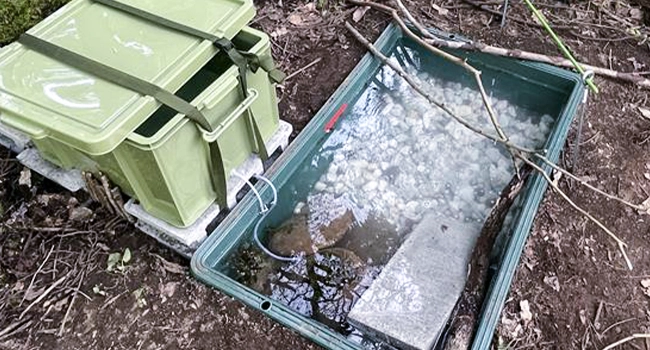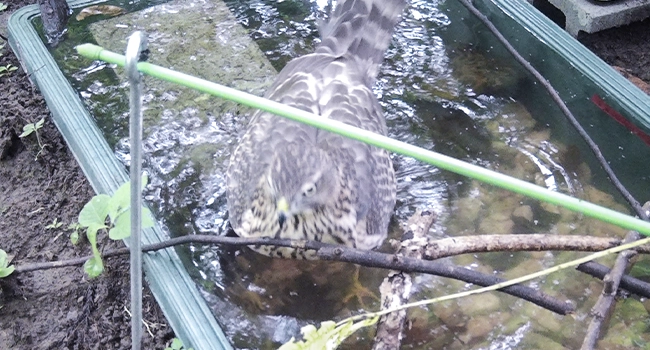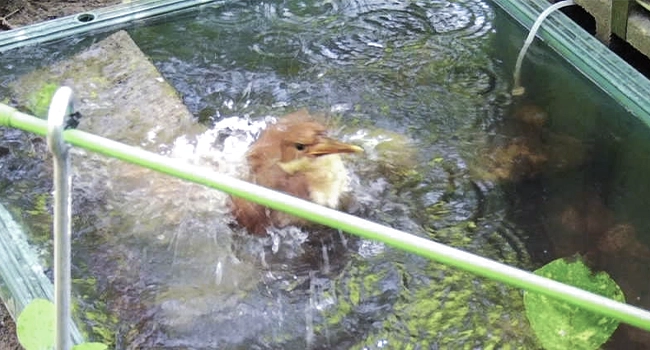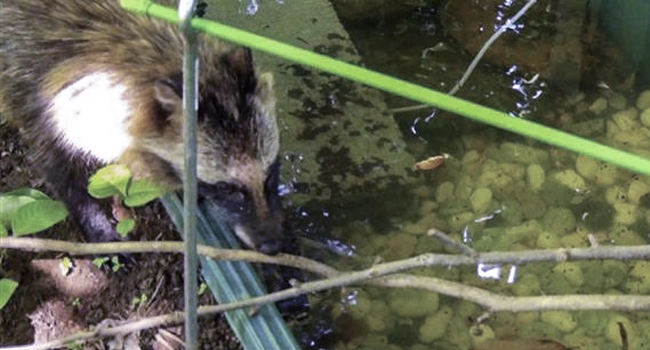Biodiversity Conservation
Identification of Biodiversity-related Risks and Opportunities
Please refer to TNFD-related Initiatives for details.
Avoidance and Mitigation of, and Compensation for, Impacts to Protected Areas
INPEX has made a commitment in our Policy and Commitments on Biodiversity Conservation to "not operate our businesses inside UNESCO World Natural Heritage site boundaries". We have confirmed that, as of December 31, 2024, none of our operator projects are operating in areas that we have defined as exclusion zones.
Furthermore, since FY2019, we have been enhancing our geographic information system (GIS) with information on protected areas obtained from the World Database on Protected Areas (WDPA)1, and animal and plant species that fall under the International Union for Conservation of Nature (IUCN) Red List categories below.
- Confirmation if our operator projects operate in any protected area
- Initial screening of potential impacts of new projects on protected areas
- Planning of biodiversity conservation activities in existing projects
1Database developed by the United Nations Environment Programme (UNEP) and International Union for Conservation of Nature and Natural Resources (IUCN)
Promotion of a Net Positive Approach
To better understand the present situation of our nature-related efforts and identify further necessary actions, we have utilized the World Business Council for Sustainable Development (WBCSD) practitioner’s guide: "What does nature-positive mean for business?" published by the WBCSD for practitioners in 2021. In accordance with the WBCSD guidance, we identified that our progressing areas in particular are the development and disclosure of biodiversity and water commitments, and efforts to avoid, mitigate, and compensate for biodiversity impacts based on the mitigation hierarchy. In the future, we will consider nature-related impacts and dependencies in terms of the value chain and implement initiatives that contribute to net positive impacts.
Promotion of Biodiversity Conservation Activities
The type and degree of impact that our business activities have on biodiversity differ depending on the scale, activities, and location of each project. Accordingly, the biodiversity conservation efforts required for each project also differ. Therefore, we assess the materiality of biodiversity in the areas in which we operate, and the risks and impacts on biodiversity that each project brings. For environmentally sensitive areas that are particularly important (protected areas, critical habitats of threatened species, forests, mangroves, coral reefs, wetlands, and tidal flats, etc.), we plan and implement biodiversity conservation actions to avoid, mitigate, and compensate for the risks and impacts of the project, based on the mitigation hierarchy.
For many years, we have been conducting activities that contribute to biodiversity conservation at our sites in Japan and overseas. We will continue to enhance our biodiversity conservation activities across the INPEX Group based on our Policy and Commitments on Biodiversity Conservation established and published in December 2022.
In FY2024, to further observe and promote our commitments, we established "Achieve net-zero deforestation in operational organizations starting in 2025 or later" and "Implement 100% of planned biodiversity conservation activities" as Group-wide measurable quantitative targets. In FY2024, we implemented 90% of our planned biodiversity conservation activities.
Furthermore, to appropriately manage the impact of our business activities on biodiversity, we conduct biodiversity assessments at all sites of our operator projects. Based on the results, high-risk sites have been identified, and it has been confirmed that there are 7 sites (92,319.08 hectares) that we operate, are adjacent to areas for biodiversity conservation. At these high-risk sites, we have biodiversity management plans and are actively working to mitigate our impacts, conserve habitats, and enhance monitoring, among other efforts.
|
Number of Sites |
Area (ha) |
|---|---|---|
Operational sites |
46 |
92,416.44 |
Sites where biodiversity impact assessments are conducted |
46 |
92,416.44 |
Of the sites assessed, sites in close proximity to critical biodiversity |
7 |
92,319.08 |
Of the sites in close proximity to critical biodiversity, sites that have biodiversity management plan |
7 |
92,319.08 |
Overseas Efforts to Conserve Biodiversity
The Ichthys LNG Project’s onshore processing plant is located in Darwin Harbour, where extensive mangrove forests along the coast provide breeding and feeding grounds for fish and sea turtles. To protect this rich biodiversity, we have continued to comprehensively monitor wastewater quality, seawater quality, and growing conditions for mangrove forests and other natural vegetation in Darwin Harbour even after we began the project operation. We further contribute to biodiversity conservation around the plant by sponsoring marine research projects such as dugong studies in the Northern Territory.
Please refer to the Cardno report: "Darwin Harbour – A Summary of the Ichthys LNG Project Nearshore Environmental Monitoring Program" (page 98)
As a part of the Environmental and Social Impact Assessment process (AMDAL) for the Abadi LNG Project in Indonesia, we surveyed the distribution of coral reefs in the marine area near the project site using satellite image analysis in 2021 . We also conducted a coral reef survey by diving in the sea in front of the project site in November 2023. Using the results of these surveys, we are conducting an impact assessment and planning to formulate and implement measures to reduce the impacts on coral reefs based on a mitigation hierarchy.
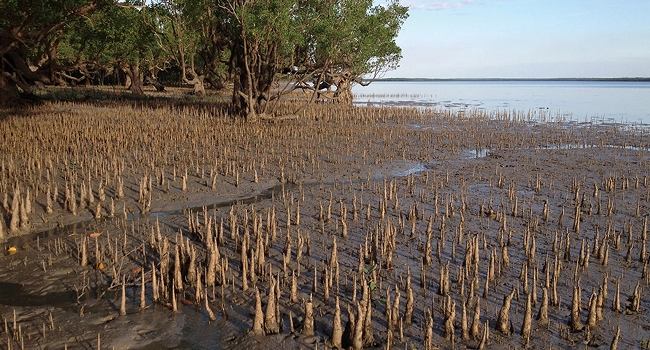
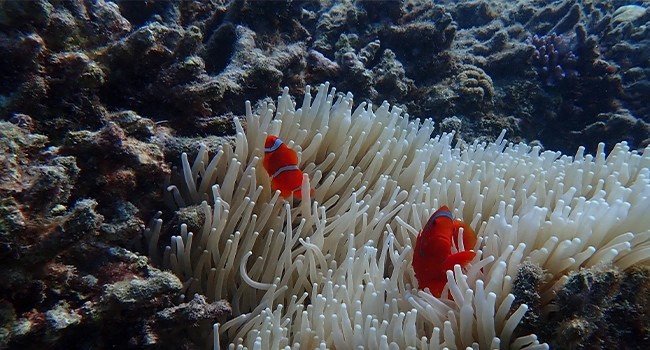
Efforts to Conserve Biodiversity in Japan
Understanding of Characteristics of Environments around Site in Japan
In FY2021, we conducted desktop reviews to understand the regional characteristics of environments around sites in Japan (rivers, fishing grounds/farms, forests, biodiversity conservation areas, cultural heritages, natural monuments, critical habitats of threatened species, etc.). We then compiled this information using our GIS. This enabled us to understand the ecosystems around our sites, and also to understand environmentally sensitive areas around sites at the planning stage of new projects. The results of these reviews are also used to identify and assess – following the LEAP approach of the TNFD framework – the natural capital on which our sites depend or impact. Please refer to TNFD-related Initiatives for details.
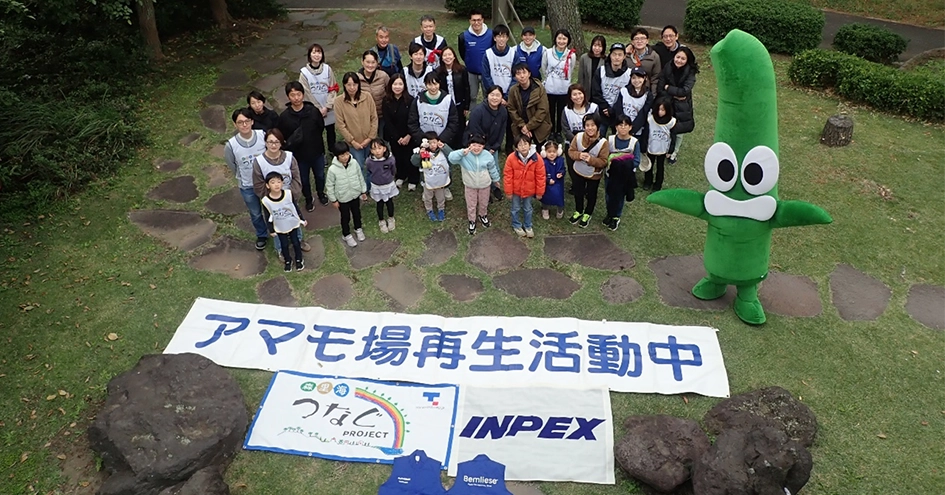
Efforts for Tokyo Bay UMI Project
In 2024, we started participating in the Tokyo Bay UMI Project, an environmental conservation initiative aimed at restoring and maintaining the rich natural environment of Tokyo Bay. This project aims to sustain biodiversity by restoring eelgrass beds in Tokyo Bay and increase public awareness and understanding of the sea through its activities. Through public-private collaboration, the Ministry of Land, Infrastructure, Transport and Tourism undertakes activities together with private companies and NPOs.
In 2024, we participated in an activity where sand and mulch were mixed with eelgrass seeds that were selected in the summer, packing the seeds into biodegradable, non-woven fabric packages and handing these to authorized divers to lay them on the seabed. Our employees and their families took part in this activity. All participants, including small children and adults, listened intently to a lecture on seed-planting by the Association for Shore Environment Creation, an NPO that runs the event, and enjoyed selecting and packaging the eelgrass seeds. The seeds planted on this occasion are expected to sprout on the sea floor and bloom next spring.
Efforts at "Kitsunedaira Donguri-no-mori"
As part of the Niigata Prefecture’s Forest Management Support Program ongoing since FY2010, the Kitsunedaira Donguri-no-mori (Acorn Forest) Project is being conducted in the Fudosawa district of Nagaoka City, adjacent to the Nagaoka Field Office. In addition to this forestation activities, since FY2019, we have been conducting biodiversity surveys in Kitsunedaira Donguri-no-mori to investigate the species that are using and inhabiting the forest. As a result of the surveys conducted in FY2019 and FY2022, a wide variety of species have been observed, including antelopes and foxes. In FY2024, we conducted additional surveys using environmental DNA analysis in addition to the current survey methods.
Kitsunedaira Donguri-no-mori reforestation activities
- As part of Niigata Prefecture’s "Forest Management Support Program" launched in FY2010, the Kitsunedaira Donguri-no-mori (Acorn Forest) Project is being conducted.
- In addition to conventional reforestation activities, a biodiversity pilot survey was conducted in autumn of FY2019.
- Based on the results of the autumn FY2019 survey, a year-round survey was conducted in FY2022.
- The results of the survey were shared with participants in forestation activities in FY2023.
- In addition to conventional reforestation activities, environmental DNA analysis was conducted in FY2024.


・Reforestation Activities
Twice a year, in spring and autumn, we work with local community members on forest maintenance, tree planting activities, and holding of nature observation sessions for children. (This initiative was suspended in 2020 due to COVID-19 and recommenced in 2024.)
In 2024, in addition to regularly conducting reforestation activities, we carried out environmental education for children regarding the species inhabiting Kitsunedaira Donguri-no-mori as well as their ecologies.
・2024 Biodiversity Survey (Environmental DNA Analysis)
For approximately seven months, from April to October 2024, we placed eight sensor cameras in the same locations as the 2022 survey to understand the state of biodiversity at Kitsunedaira Donguri-no-mori continuously and in greater detail. We also created a makeshift water spot in the forest, and we similarly conducted fixed point observation using a sensor camera to study the species visiting the water spot. We also conducted an environmental DNA analysis study at the water spot, and by comparing with the results from the sensor camera study, we studied the potential of using environmental DNA analysis techniques.
At first, few species were confirmed at the water spot, but with time, the water spot came to be recognized and used as a place for bathing and a source of drinking water. The establishment of the water spot has led us to the identification of new species – such as the Eurasian goshawk and the ruddy kingfisher – that could not be identified in studies using only existing sensor cameras. It is suggested that installation of water spot has contributed to a more detailed understanding of the species inhabiting Kitsunedaira Donguri-no-mori. We also conducted environmental DNA analysis on water samples obtained from the water spot, and many birds and mammals confirmed by the sensor camera to frequently visit the water spot were also detected through the analysis. Through this study, in addition to existing methods such as those using sensor cameras, we think that it is possible to obtain highly accurate information for identifying species by conducting environmental DNA analysis. We also succeeded in detecting bats, reptiles, and amphibians, which are difficult to detect using sensor cameras. This information will be useful in selecting survey methods for future studies at Kitsunedaira Donguri-no-mori in the future.
